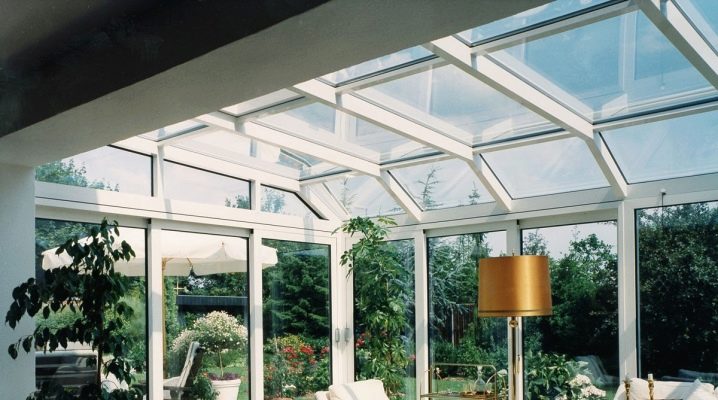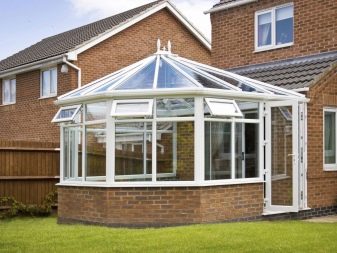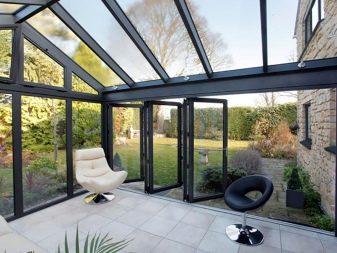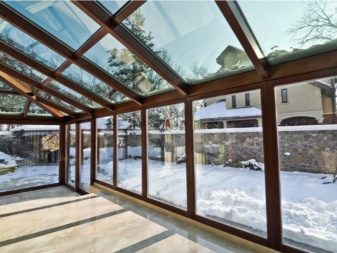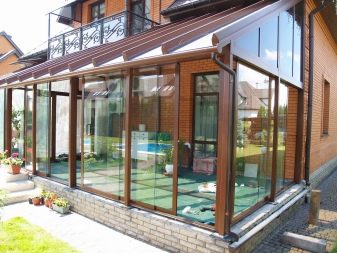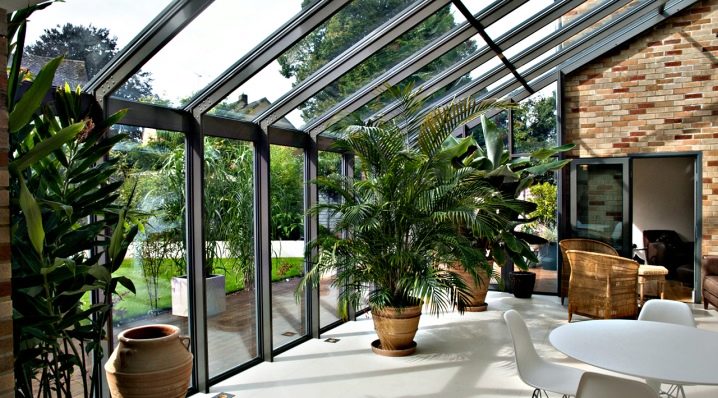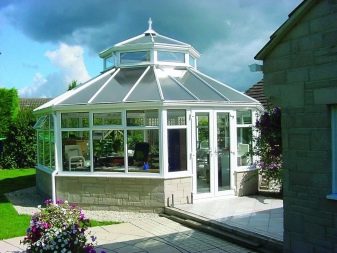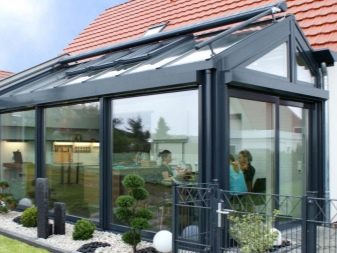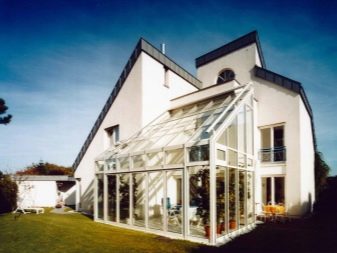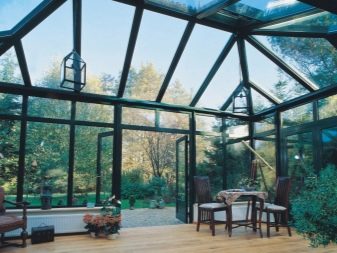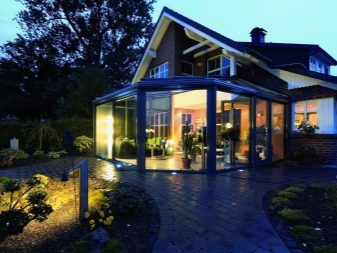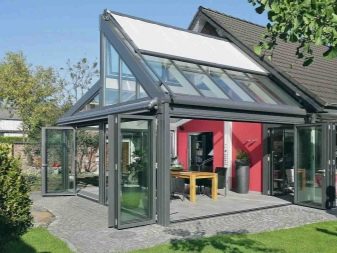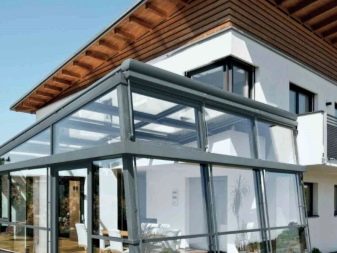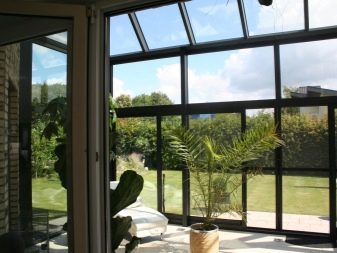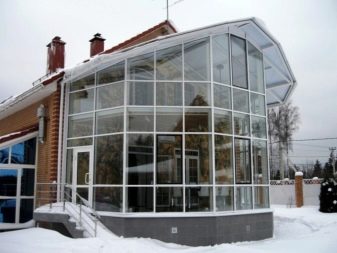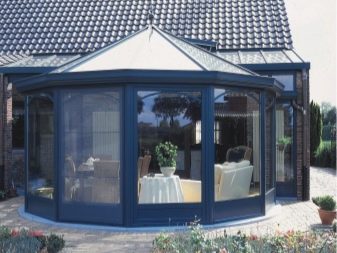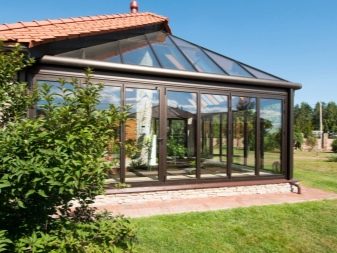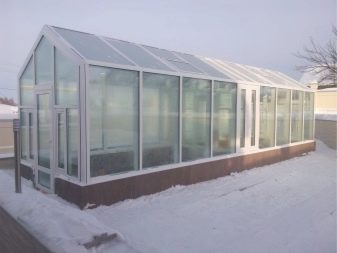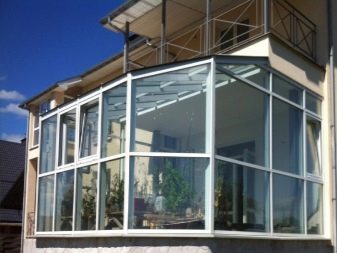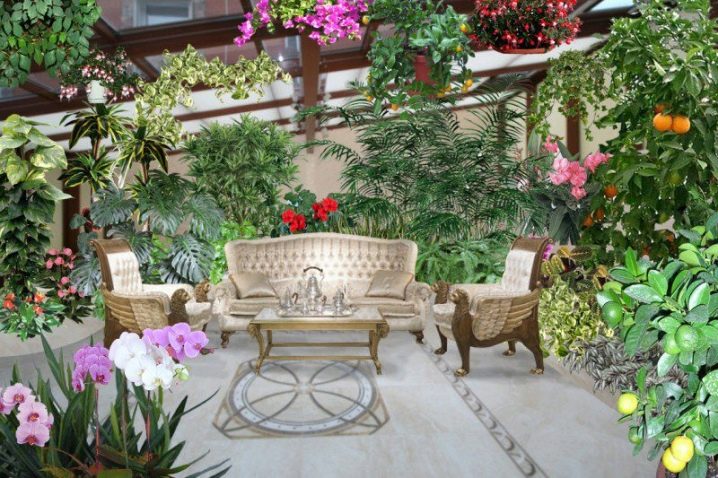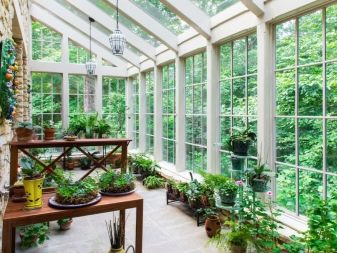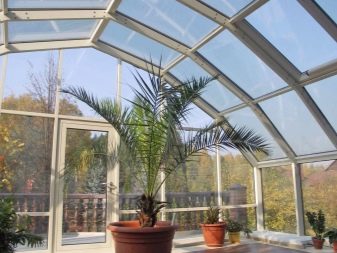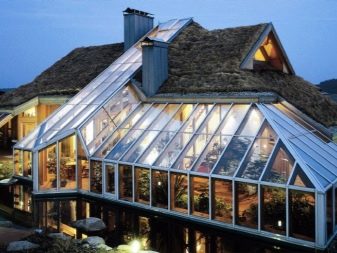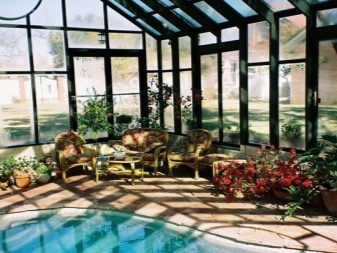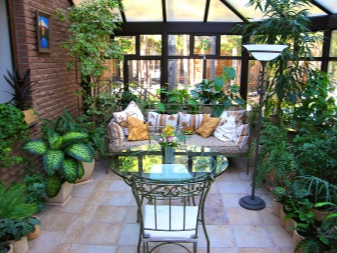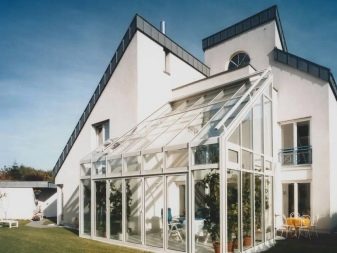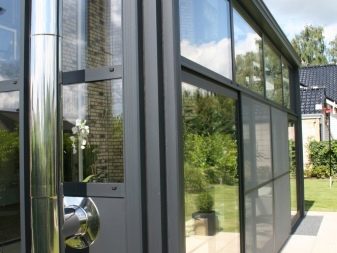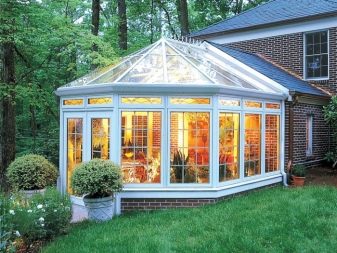Winter gardens made of aluminum: the advantages and options of designs
If you want to give the living room a more modern and well-groomed appearance, as well as to equip for their households a "rest corner", then be sure to organize a winter garden. You can use for this purpose a loggia in the apartment, but the ideal option would be to make a spacious extension to a private house, glazing it from all sides.
Special features
To build a winter garden of your dreams, consider its location and, of course, provide high-quality glazing. Exactly this will depend on the violent flowering of plants in cold conditions. Temperature and humidity should be as comfortable as possible for the owners, because in the cozy winter garden you will most likely spend most winter days.That is why the choice of material for the construction and glazing of the winter garden is so important.
The most technologically advanced and durable finishing materials are metals., one of the most common ones is aluminum. Constructions of winter gardens usually use an alloy containing 80-90% aluminum, with additives for additional strength and improved mechanical properties. Aluminum is able to retain its structural properties under any climatic conditions - it is not afraid of either 50 degrees of frost or 50 degrees of heat.
In addition, this "winged metal" resists intense ultraviolet radiation and high humidity, which is especially important in coastal areas. The only drawback of aluminum is high thermal conductivity, which means that temperature fluctuations will affect the parameters of the building elements. The combination of aluminum and glass in the construction of the winter garden will provide it with special strength and durability.
The aluminum frame is able to withstand the weight of even very large-scale glazing. The glass roof should be safe in order not to crack under the onslaught of precipitation, which is why shelter is usually made of Plexiglas or polycarbonate. In this case, the strength of the second option is many times the usual glass.
The tilt angle of the shelter can be up to 60 degrees, while the steeper the roof slope, the easier it will be to take care of it: precipitation will fall down, and condensate from the inner side of the glass will drain itself. In addition, sunlight penetrates better through a sloping roof, serving as a natural source of heating for the winter garden in the fall and winter.
As for the location of the aluminum construction, the southern or eastern side of the house would be the best option. The sun enters the winter garden on the east side in the first half of the day - it does not shine so intensely and will not harm flowers like direct sunlight after 12 hours. Therefore, many plant species will feel most comfortable here.
On the south side in summer the room may overheat, in which case you will have to allocate additional funds to darken the room and reduce the temperature. Air conditioning and well-designed ventilation, of course, will help, but you will have to water the plants more often. But in the fall or winter, the construction on the south side will serve you well.
The advantages of aluminum profile
More than half of our compatriots choose aluminum profiles for glazing of winter gardens, because This material has many advantages and advantages:
- a light weight;
- fire safety;
- ease of installation;
- mechanical strength;
- durability (aluminum profile will last 70 years without major repairs);
- resistance to temperature extremes;
- strength and rigidity of the frame;
- non-susceptible to moisture;
- affordable price;
- ease of maintenance;
- anti-corrosion protection (aluminum does not rust);
- resistance to precipitation and wind;
- safety for health, as it does not contain harmful substances;
- the ability to withstand the weight of the glazing;
- aluminum will organically fit into any interior;
- has good light transmission ability;
- resistant to chemical attack;
- not afraid of exposure to ultraviolet radiation;
- plasticity, so you can give the structures any shape.
Variety of shapes
The simplest construction that can be built independently is an extension of the winter garden with a lean-to roof to the wall of the house. At the same time, the slope angle should be from 30 to 60 degrees, so that in winter snow does not accumulate on the glass roof. The variant of the construction with a double-slope roof should be used if you plan to make a winter garden that is long in length.
The extension with a three-beam roof is a more complex, but beautifully designed version with a large number of corners. Such an aluminum construction is recommended for a winter garden with a “round” layout. Corner extension is usually chosen based on the intensity of lighting during the day. A more complex corner option - with a three-beam roof and an unusual interior layout.
A very rare and complex aluminum construction - with a “tie-in” into the house, when the winter garden integrates into one of the rooms in the house, for example, the living room, dining room or lounge. There are also options for winter garden structures installed separately from the house - with a double-slope, pyramidal, rectangular roof with bevels. Such detached aluminum structures require internal and external insulation on all sides.
Double glazing
Double-glazed windows in the winter garden are not only designed to allow sunlight to pass through, but, if necessary, on the contrary, dim certain areas. The microclimate inside the greenhouse and how the flowers grow will depend on such lighting. When using different types of glass, it is possible to create several climatic zones in the winter garden for different types of plants, which need different thermal conditions and light levels.Also, to control the climate of the garden, you can install humidity sensors and temperature.
Double-glazed windows can be transparent, reinforced, tinted, matte, tempered, mirrored, fire-resistant, and even with an automated self-cleaning system. The sloping part of the shelter is usually glazed with a tempered glass pane from the outside and triplex inside. This is a safe type of glazing, when its fragments, if broken, will not injure others. In some modern glass constructions, innovative hatches on the control panel are also used.
Glazing of the winter garden depends entirely on your preferences and financial capabilities. The classic version - single-chamber windows. If finances allow, then for additional noise insulation you can use double-glazed windows around the perimeter of the winter garden, but for the shelter they will be too heavy. For the roof is usually used glass with triplex and second tempered glass.
If desired, and at an additional cost, you can toned roof to protect plants from exposure to direct rays.The cost of a project to build a winter garden will depend not only on the type of glazing, but also on the size of the supporting aluminum structures. The higher they are and the larger they are, respectively, the project cost will be more expensive. However, for some configurations of winter gardens, additional supporting parts made of steel may be needed.
Warming
Winter garden insulation can significantly reduce heating costs and grow heat-loving plants, even in the harsh Russian climate. One of the ways of warming is gluing a special film on glass. This will not only protect you from low temperatures in the winter garden, but also increase the strength of the glass.
Additionally, the insulation of windows and doors with a double layer of rubber seal will help to warm the room. And if you need a very high temperature, for example, to grow tropical plant species in a greenhouse, then you can use a “warm” aluminum profile with an insulator.
Heating
According to the purpose and type of heating, there are also several types of winter gardens. Unheated structures are non-residential and suitable exclusively for plants, but, unfortunately, the microclimate is not constant here, so only unpretentious types of flora will take root in such a garden.The ideal option that will require significant investment is a constantly heated residential structure, where plants can delight their owners for the whole year.
As systems for heating the winter garden from aluminum, you can use a connection to a central system, a heated floor, an air conditioner with warm air, or electrical appliances. It is advisable to consider the design of the heating system even before the construction of the winter garden. At the same time, the outer side of the greenhouse also needs to be heated so that ice does not form on the glass. For this glass roof is equipped with a system with a heating cable.
If you have an insatiable desire to be closer to nature, the aluminum winter garden is just what you need. Even in the most severe frosts you will be able to relax and gain strength among the flowering plants. And no matter what size the winter garden and where it is located - on the balcony, in the extension to the cottage or even on the roof. In addition, it is a great option to expand living space, which can later be used for practical purposes.
In addition to residential and suburban premises, aluminum winter gardens can also be seen in office and office buildings, sports complexes, recreational and entertainment centers.Aluminum constructions will harmoniously fit into the interior of any, even the most daring in design room, and make it more colorful.
Beautiful examples
Winter Garden - a link between nature and man.
The aluminum frame is very practical and durable.
Aluminum profile will organically complement the architecture of the building in any style.
The winter garden can adjoin the house or act as a separate structure.
See the following video for the advantages and variations of the aluminum winter garden designs.
